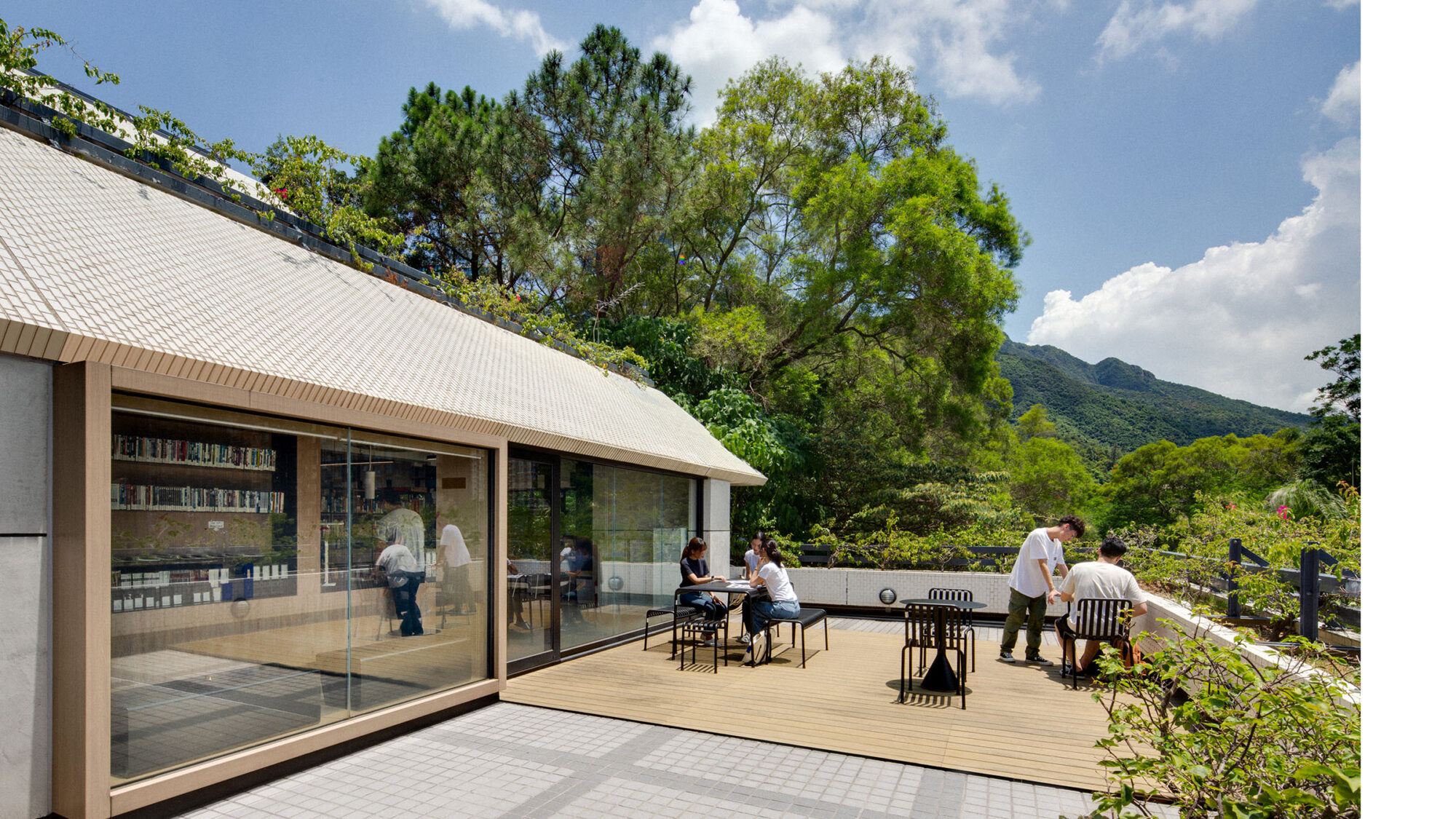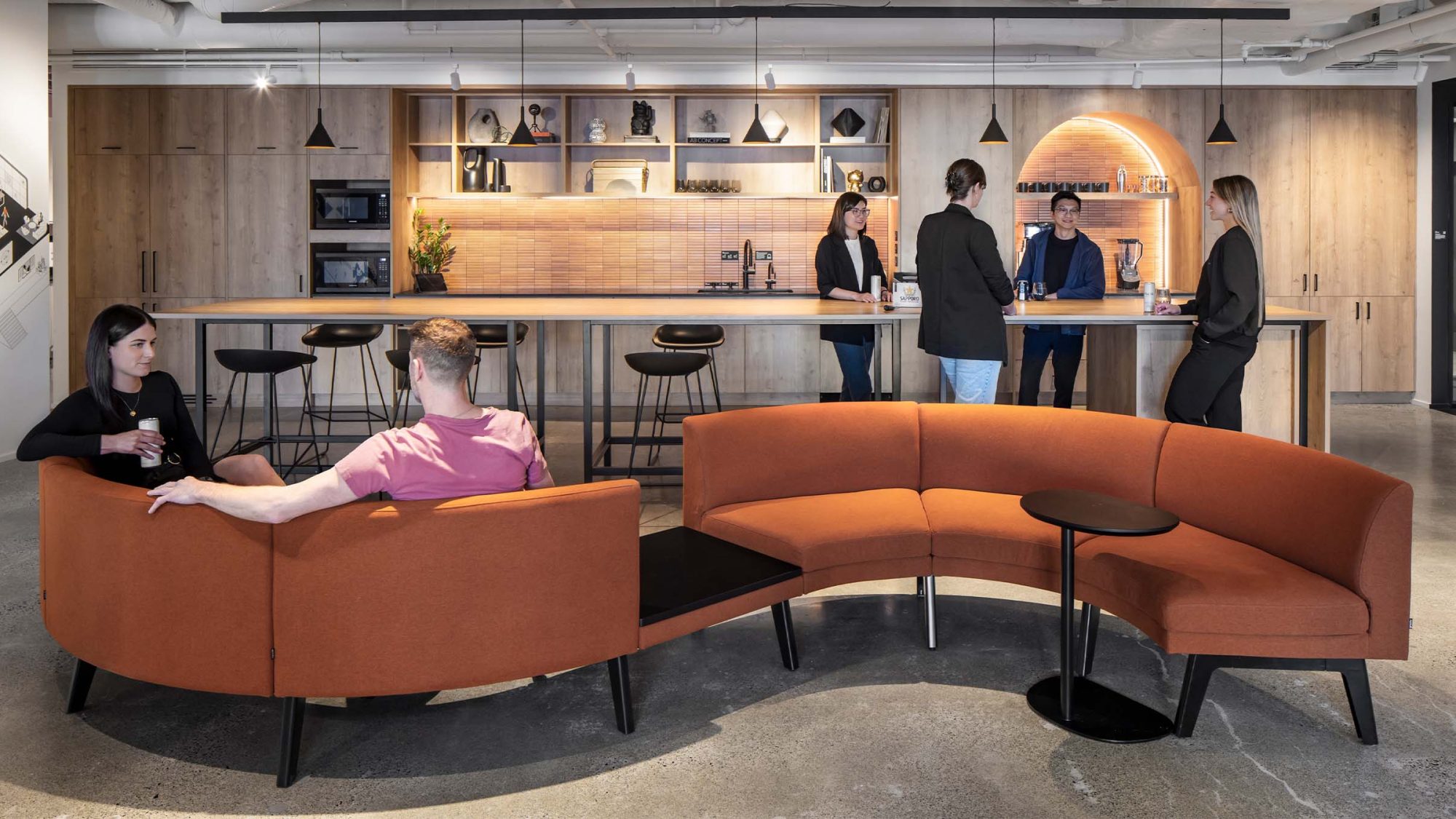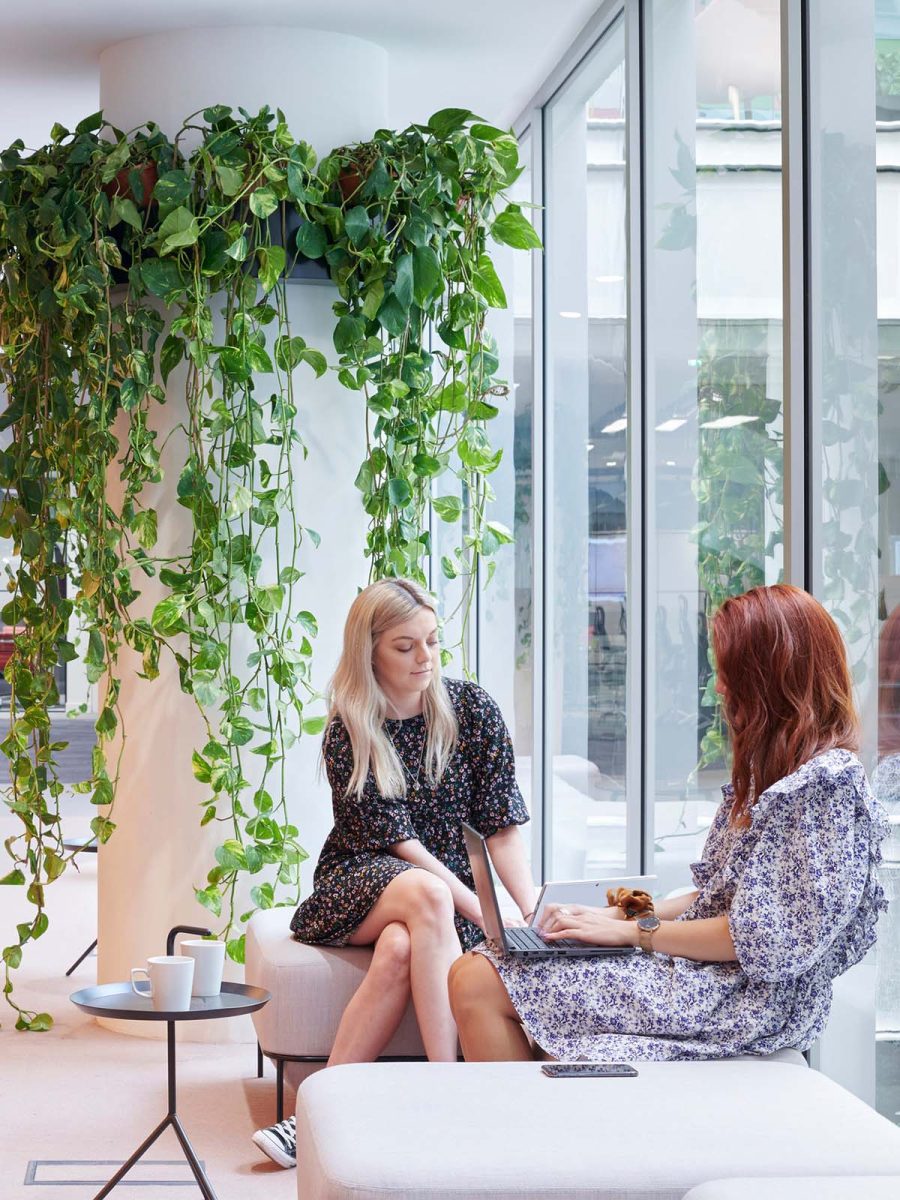










We live and work in a digital era where remote work and virtual interactions aren’t just the norm – for most of us, they dominate our professional lives. It’s no secret that this excessive screen time can contribute to exhaustion and burnout. Furthermore, the connection between loneliness and work-related fatigue is evident across multiple industries. Research indicates that 62% of employees experience feelings of loneliness, which often results in disengagement at work. Employee engagement goes a long way, with another report stating that companies with a highly engaged workforce have 21% higher profitability. They also have 17% higher productivity than companies with a disengaged workforce.
So how do we counter the effects of our digital lifestyles on our feelings of belonging, community and connection? Given that we spend a third of our lives at work—approximately 90,000 hours—it stands to reason that we could address loneliness by starting at the root: the office. This article explores the critical importance of the physical workplace as a vital counterpoint to this era of loneliness through its ability to foster wellbeing, community and authentic connections.



Loneliness has great impact on an individual’s overall health and wellbeing. Our welfare is intricately tied to our connections, friendships and the personal interactions we have with one another. Studies consistently show that strong bonds are essential for mental and emotional health. On the other hand, feelings of social connection contribute to lower anxiety and stress levels, stronger immune systems, improved mood and even longer lifespans.
Our relationships are a source of healing and wellbeing hiding in plain sight – one that can help us live healthier, more fulfilled and more productive lives.
Dr. Vivek Murthy, US Surgeon General
In this era of loneliness, interpersonal relationships are more important than ever. The U.S. Surgeon General, Dr. Vivek Murthy, has highlighted that loneliness and isolation are not just personal struggles but significant public health issues. Several studies state that loneliness can increase the risk of numerous health-related issues.

The great shift towards remote work and increased reliance on digital communication has significantly reduced our opportunities for meaningful engagement. Research from the American Psychological Association highlights that while virtual interactions can maintain productivity, they often lack face-to-face communication’s depth and emotional resonance. A study by the Pew Research Center found that 46% of adults reported feeling isolated due to the reduction in in-person interactions.
According to a study published in the Journal of Social and Personal Relationships, 39% of people report feeling less connected to their colleagues and friends due to the predominance of virtual communication. This decrease in connection may stem from the loss of spontaneous, informal interactions— those serendipitous’ water cooler moments’ — typically experienced in physical environments. Without these casual encounters and relationship building, the overall sense of community within organisations is lessened, contributing to a growing sense of loneliness and isolation. This highlights the importance of creating deliberate avenues and spaces for meaningful connections in the workplace.

In a recent study conducted by M Moser, the workplace is identified as one of the last significant gathering places for meaningful social connections. It stands out as one of the few environments that systematically and intentionally brings people together. This space not only supports collaboration and productivity but also serves as fertile ground for building deeper relationships.

Beyond individual connections, the collective function of the workplace is to facilitate and maximise synchronicities. Coined by psychologist Carl Jung, synchronicities are coincidences that reflect deeper patterns and connections that go beyond mere chance. This concept is often seen in moments when seemingly random occurrences align significantly, contributing to a deeper understanding or experience. In this context, the office acts as a device to increase the variety of synchronous events, both intellectual and emotional, professional or personal.
Synchronous events most often lead to spontaneous interactions. When meaningful coincidences align in a seemingly fateful way, they can create unexpected opportunities and environments that prompt people to react or interact in unplanned, spontaneous ways. This can lead to deeper ideating and speed to innovation, problem-solving breakthroughs and stronger personal connections.


Workplaces offer a unique opportunity for individuals to align their visions, share common goals and engage in meaningful interactions. Daily routines, shared challenges and collective celebrations all contribute to a sense of belonging and community that is hard to replicate elsewhere. These events enhance our professional and personal lives, creating an environment where serendipitous encounters lead to growth and improved wellbeing.

Collaborating in the office and establishing social connections is beneficial for our overall wellbeing. To effectively support these connections, the office environment must be thoughtfully designed.
Our team specialises in designing offices that enhance collaboration and cultivate engagements. Our strategic approach is to design workplaces to support connection by creating spaces that naturally encourage interaction and collaboration.
For instance, open floor plans with communal areas like lounges, coffee bars and breakout rooms can facilitate spontaneous conversations and teamwork. Additionally, designing multipurpose spaces that can be used for both work and social activities—like flexible meeting rooms that double as event spaces—can enhance community building. Implementing features like writable walls and shared desks also promotes a culture of openness and idea-sharing. These design elements can transform the office into dynamic hubs for meaningful social connections, help alleviate feelings of isolation and overall boost employee morale.

When we prioritise design that builds and nurtures connections within our workplaces, we greatly lessen the impacts of loneliness and enhance overall health and happiness. By investing in our workplace communities, we’re investing in our collective wellbeing. This approach helps transform colleagues into friends, supporters and companions on our shared journey through life. To learn more about how our teams can help you get started, please contact us.

Group Director